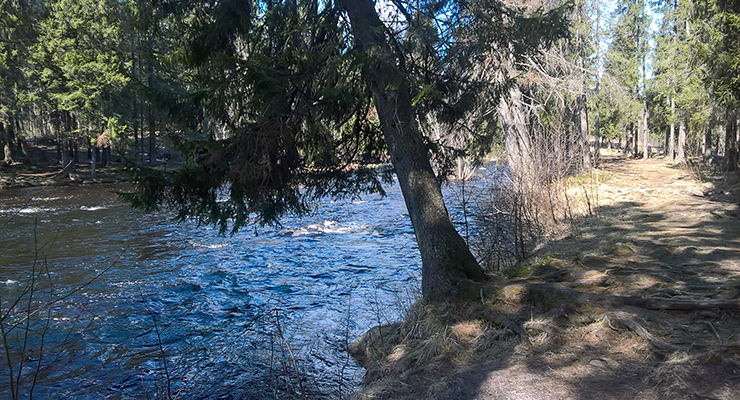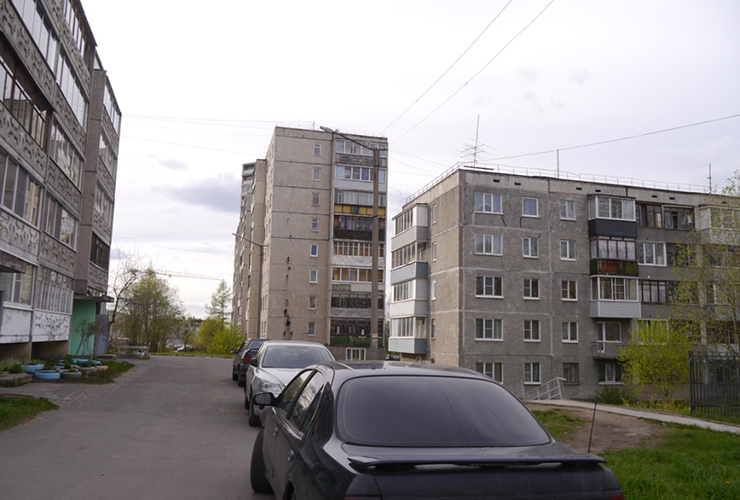Researcher and NPE team member Adrian Braun spent several weeks in 2017 in Petrozavodsk (Finnish Petroskoi), the capital of Russian Karelia and shares a few of his experiences and impressions about this city
Petrozavodsk is one of the largest cities in the Barents region with around a quarter of a million people living in this city that is located at the shore of the second largest lake in Europe, Lake Onega. It is a place with a long history throughout diverse eras. Archaeologists found evidence that already 7000 years ago, settlements had been located, where Petrozavodsk is nowadays. However, modern Petrozavodsk developed from several villages in the medieval ages. The name Petrozavodsk means Peters factory and origins from an iron and cannon manufacturing site established in 1703 to honour Tsar Peter the Great. Petrozavodsk and the entire territory of Karelia belonged once to Finland until the end of the Winter War and the peace negotiations in 1947 when Karelia had been split into a Finnish and a Russian part. Petroskoi became again Petrozavodsk.

The shore of Lake Onega in Petrozavodsk during the midnight sun in early June
It is to this date an industrial area and this is evident for Petrozavodsk´s citizens in everyday life with respect to multiple facets. Long chimneys are visible throughout the city and large parts of the urban area are characterised by apartment blocks that have been built in the Soviet Union era. These buildings have hardly seen any modernisation since then. However, residents of Petrozavodsk have at least two great possibilities to escape the greyish life from the apartment blocks quite quickly for a piece of beauty. One place is the shore side of Lake Onega with a long promenade and a couple of restaurants and hotels. In the few warm summer months, locals sit on the promenade, play guitar, or walk around here. The other notable place is a small forest area uphill in the middle of the city, which entails the Kurgan winter sports centre, which allows athletes amongst others to do cross-country skiing and biathlon. Here the trees cover the chimneys and greyish areas and Petrozavodsk´s citizens find a place to relax.

Kurgan - A place to relax: Some nature in the middle of a rather greyish city
Going back to the every-day life, the city is full of contrasts. In the streets, one can perceive a lacking wealth in many instances. The roads are largely broken; particularly the side roads in front of the apartment blocks have often a larger surface of potholes than remaining road. Porridge, beetroot and potatoes are the main choice for many customers in the grocery stores, as the low income does not allow many people to afford much more. The recent economic backdrops with a losing value of the Russian Ruble and international sanctions towards Russia, resulted in rising prices of many products, similar or equal to central European conditions. Milk, butter, beef, and fish with a decent quality, for example, are in most shops more expensive than in Western Europe. With an average net income of around 25.000 Rubles per month in Petrozavodsk (as of February 2018 ~ 358,00 Euros), it is a big challenge to feed a family. To pull through life there are several approaches among Petrozavodsk´s citizens. Many of them offering taxi services with their private car, which is in line with the Russian legislation. Due to the high competition, the driver´s bring one from one spot in the city to the other for normally only 1-2 Euros for the whole journey. Using the taxis, every passenger should be prepared to quite wild driving styles and the driver is telling one during the journey that he has no change. If one does not like the rush through Petrozavodsk´s streets one should not be shy to complain. The first complaint is usually ignored, but with the second, they normally slow down. Of course, one has to pay cash, as the taxis are not equipped with a card reader.

A few typical apartment blocks in one of the Eastern areas of Petrozavodsk
Visitors of Petrozavodsk can perceive also some exciting cultural assets of the city. There are a couple of theatres and music halls and three museums. Notably, Petrozavodsk is a hub of the ethnic minority group, the Vepsian people, who belong to the “Finnic” people. Today there are only a few thousand Vepsians left and many of them particular of the younger generations are not able anymore to speak their native tongue - Vepsian language. Petrozavodsk is also home to the Petrozavodsk State University, consisting of 10 faculties, including among others the scientific fields of law, economics, mining and geology, agriculture, forestry and philology.
To conclude, Petrozavodsk is a city full of contrasts, positive and negative characteristics, beauty and ugly go often hand in hand. It is definitely worth a visit, particular if one knows some locals that can lead one around the city, know the good restaurants and the places worth to visit. A visitor should always keep the eyes wide open and the senses sharpened, because with an eye for the detail, one will perceive from time to time signals of an almost forgotten past when Petrozavodsk was a part of Finland. One example is the central bus station that every taxi and bus driver knows as “Avtovokzal” even though on the roof of the main building the Finnish word “AUTOASEMA” in large blue letters is very well visible to everyone who passes by the building. The other signs of Finnish roots in Petrozavodsk and entire Russian Karelia you will discover yourself, the day when you will visit this historical place.
Text and Pictures: Adrian Braun